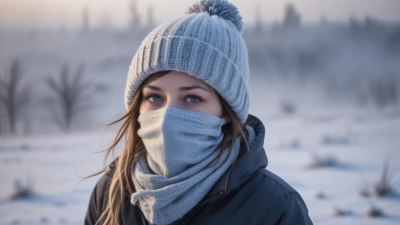How Cold Is Too Cold: The Temperature Where Weather Turns Deadly
Explore the dangers of extreme cold weather conditions and what temperatures can be life-threatening.

This image was created with the assistance of Freepik
Understanding the temperature thresholds for extreme cold is essential for safety and survival. As winters grow more severe, knowing the risks associated with low temperatures can save lives. But how cold is too cold? This article delves into the temperatures where weather turns deadly, the physiological effects of cold on the human body, and steps to take to safeguard oneself during extreme weather events.
During the winter months, temperatures frequently drop to dangerous levels, especially in regions subjected to arctic winds. When the thermometer plunges below freezing, it’s important to recognize that our bodies react in various ways, leading to potential health risks. It’s not just the number on the thermometer that’s important; wind chill plays a crucial role in determining how cold we actually feel and the risks we face.
Wind Chill: A Major Factor
The wind chill factor illustrates how much colder we feel than the actual air temperature due to wind speed. This is particularly critical because it affects our body's ability to retain heat. For example, at 30°F with a wind speed of 20 mph, the wind chill brings the temperature down to a chilling 18°F. Extended exposure to these conditions can lead to frostbite and hypothermia, serious conditions that require immediate intervention.
Frostbite and Hypothermia
Frostbite is the freezing of skin and underlying tissues, commonly affecting fingers, toes, nose, and ears. Symptoms include numbness, a tingling sensation, and discoloration of the skin. Depending on the severity, frostbite can lead to irreversible tissue damage or amputation. On the other hand, hypothermia occurs when the body loses heat faster than it can produce it, causing a drop in core body temperature below 95°F. Symptoms include shivering, confusion, and an increased risk of heart failure.
The Critical Temperature Thresholds
Experts agree that temperatures below 32°F can pose a risk, especially with wind chill factored in. However, once the thermometer hits around 0°F, the dangers multiply significantly. The National Weather Service warns that frostbite can occur in less than 30 minutes when exposed to wind chill values below -19°F. Thus, it is crucial to be aware of local weather forecasts and to prepare accordingly when temperatures near these thresholds.
Safety Tips for Extreme Cold
Preparedness is vital when facing long periods of extreme cold. Here are essential safety tips to follow: Always dress in layers to trap heat effectively, opting for thermal or moisture-wicking materials as the inner layer. Invest in good-quality winter outerwear that includes wind and waterproof ingredients to maintain body heat. Hats and gloves cannot be overlooked; a significant amount of heat escapes from the head, while hands and feet are susceptible to freezing. Limit outdoor activities during severe cold spells and be mindful of the time spent outside. It’s also important to stay dry, as moisture can accelerate heat loss. When operating vehicles in cold weather, ensure they are well-maintained and equipped with an emergency kit that includes blankets, food, and water.
Vulnerable Populations
Some groups are particularly vulnerable during freezing temperatures. The elderly often have less body heat and are more prone to health complications that can be exacerbated by the cold. Young children may also be more susceptible to the effects of extreme temperatures. Additionally, individuals with chronic health conditions such as heart disease or those under the influence of alcohol or drugs may experience heightened risks. Ensuring these populations receive adequate shelter and warmth during winter months is paramount for community safety.
Recognizing the Signs of Cold-Related Illnesses
Being able to identify symptoms of cold-related illnesses can be lifesaving. In addition to the warning signs mentioned for frostbite and hypothermia, it's critical to recognize confusion or drowsiness as potential warning signs of hypothermia. If a person exhibits these symptoms, it’s essential to seek medical help immediately. Meanwhile, for frostbite, gently warming the affected areas is important; never rub the frostbitten skin as this can cause further damage.
The Role of Climate Change
Climate change is transforming winter weather patterns, leading to more intense cold snaps in some areas while others may experience milder winters. This inconsistency in weather can make it challenging to prepare properly. Adaptation, education, and community awareness become even more important as we face these changing conditions. Understanding how your local climate has evolved can guide preparedness efforts for extreme cold and educate on risks associated with evolving weather patterns.
Temperatures that can lead to deadly situations vary based on multiple factors including individual health, location, and exposure levels. Generally, once temperatures fall below freezing, the risks begin to amplify as you enter dangerously cold territories below 0°F. It is crucial to stay informed about weather conditions, dress appropriately, and know the signs of cold-related illnesses. As harsh winters persist, adopting proactive measures helps ensure safety against freezing temperatures. Weather can turn deadly if precautions are not taken seriously, making awareness and education as necessary as a warm winter coat.











